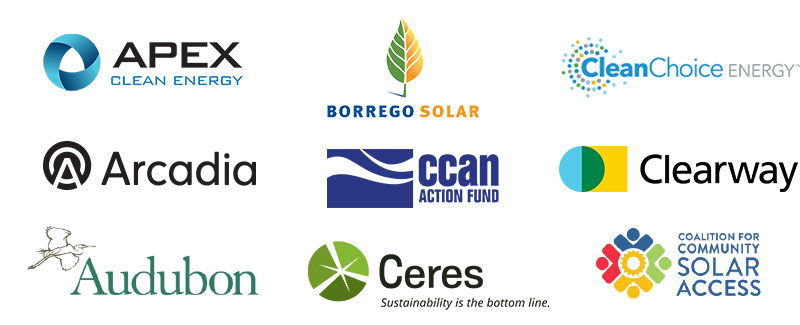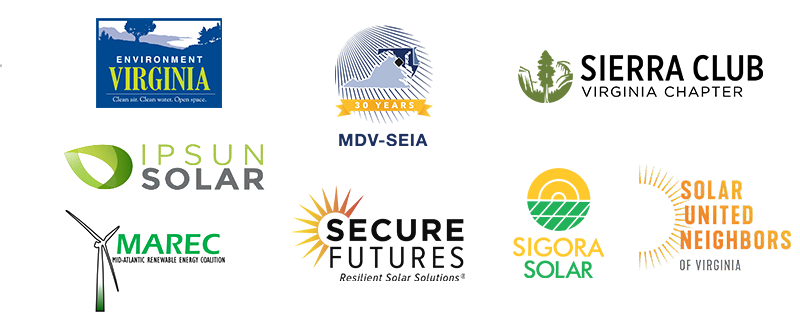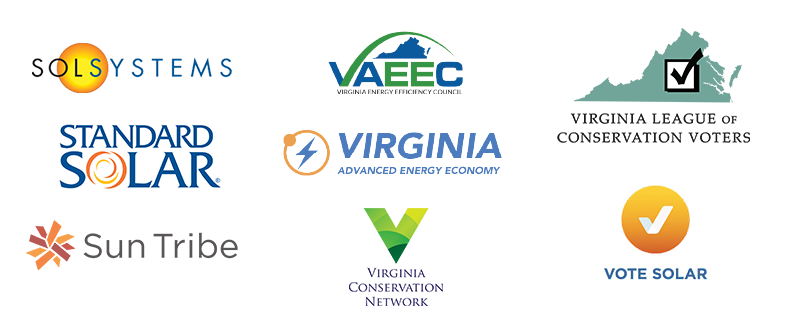The Virginia Clean Economy Act is poised to transform Virginia’s electric grid, moving the Commonwealth to reliable, affordable, and 100% clean energy over the next 25 years. It prioritizes the use of energy efficiency and distributed solar, to save money, and preserves the role of the nuclear power we already have. This transformation will help the average Virginia family reduce their electric bill. Here’s how…
Energy Efficiency
The VCEA requires Dominion to meet specific targets, providing efficiency programs to help consumers reduce energy waste. Today, the average Va. household uses 1,000 kilowatt-hours (kWh) a month. Our analysis projects the VCEA will help reduce energy use by approximately 9.25%, so the average household would use 907 kWh/mo.Offshore Wind
The VCEA enables Dominion to build 2.6 gigawatts of offshore wind 27 miles off Virginia’s coast over the next several years. When complete, that project will power upwards of 660,000 homes, create over 1,100 jobs, and make Virginia a hub for the fast-growing offshore wind industry in the United States.Solar Development
The VCEA requires Dominion to buy and build renewable energy. This means new, cost-effective solar projects, which are also creating thousands of jobs and millions in revenues for localities. Solar is increasingly the lowest-cost source of electricity, so more solar means Dominion spends less buying energy from the PJM market.Power Plant Retirements
The VCEA requires Dominion to close polluting and increasingly expensive coal, oil, and biomass plants between now and 2030. This will improve air quality and public health. The electricity these plants produce will be replaced by additional, low-cost renewable development, which will generate additional savings.
Energy Storage
The VCEA sets targets for the deployment of energy storage, which will help keep the grid reliable and resilient, and support the growth of renewable resources, while cutting emissions.
the bottom line
Add up all of the savings and costs that result from the VCEA and our analysis indicates that the average household bill would decrease by $2.72 in October through May and by $3.00 in June through September (peak months). In total, the VCEA would cut the bill of the average Virginia household by $33.76 per year in 2030 when adjusted for inflation.The VCEA will cut the electric bill of the average Virginia family by over$30 a year in 2030. To learn more, download a fact sheet that highlights the savings in detail. For a detailed analysis, download VCEA Costs & Savings to the Virginia Ratepayers: An Updated Analysis, compiled by 5 Lakes Energy for Virginia Advanced Energy Economy.
Overwhelming Bipartisan Support
73% of Virginians want lawmakers to prioritize the advanced energy investments outlined in the VCEA
Sources: Lake Research Partners
Virginia’s Clean Energy Standard Four Key Components
Reducing energy waste through efficiency
Harnessing the power of the wind and sun
Expanding consumer ownership through rooftop solar
Reducing carbon emissions over time to make Virginia free of carbon pollution by 2050
This will be benchmarked, with 73% or more of our electricity coming from clean energy by 2035, achieving the 100% goal by 2050.
These sources include energy efficiency, demand response, onshore/offshore wind, distributed solar and other in-state renewable technologies.
Learn how the Virginia Clean Economy Act accelerates the clean energy transition in the Commonwealth
For decades, our statewide energy policies have been outdated, unfair to consumers and slow to adopt innovations. But that changed with the passage of the VCEA. This, combined with the Commonwealth joining the Regional Greenhouse Gas Initiative (RGGI), will move Virginia from the back of the pack to a national leader on climate action. The VCEA put Virginia in the top five states in reducing carbon emissions and is one of just a handful of states with a legal commitment to achieve 100% clean energy by 2045.
Write your lawmaker today. Thank them for being ambitious, and urge them to stay the course on Virginia’s clean energy future.
THANK YOU FOR GIVING VIRGINIA A CLEAN ENERGY FUTURE!



